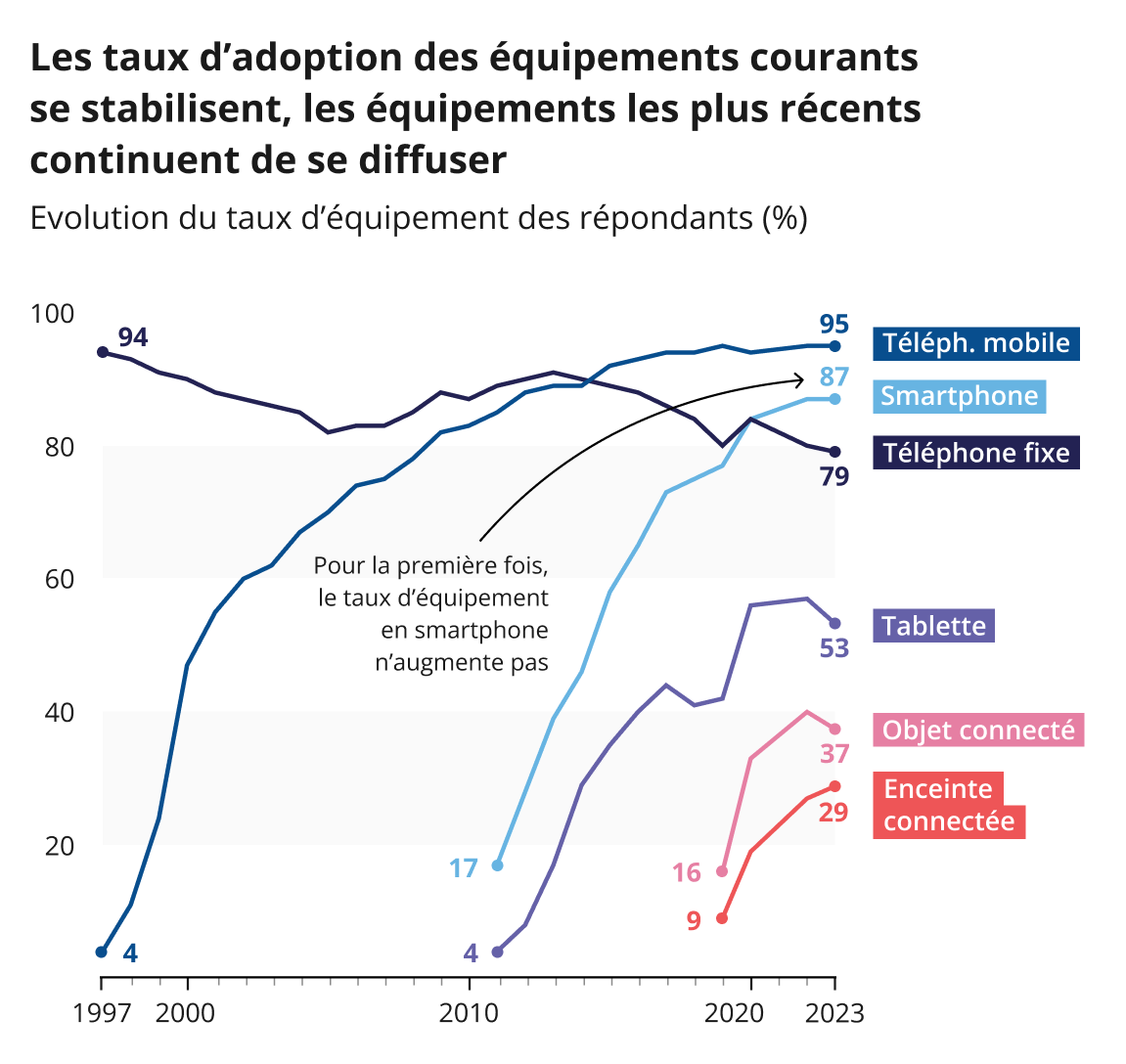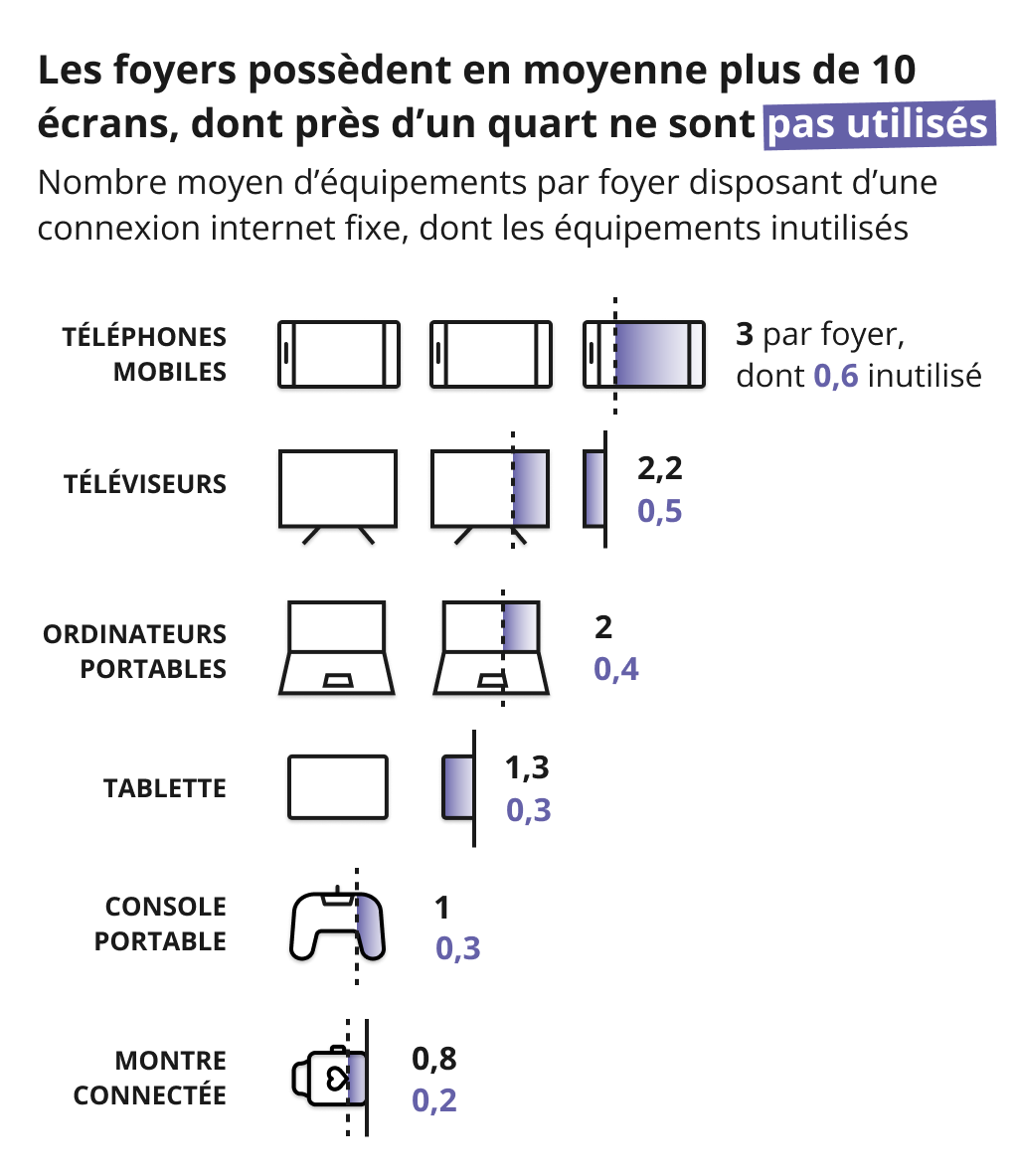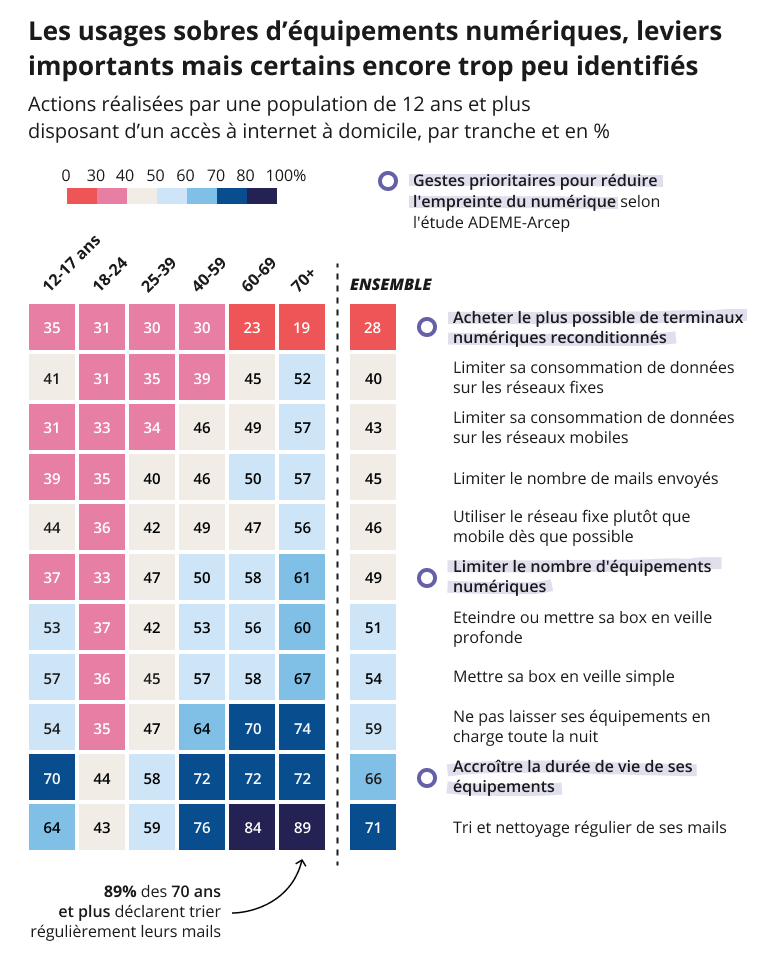Today, Arcep, the Economic Council (CGE) and France’s National Agency for Territorial Cohesion (ANCT) are publishing the findings of the Digital Market Barometer, an annual survey conducted by CREDOC[1] on the adoption of digital devices, and how their use has evolved over time.
2023 saw the increasingly widespread adoption of the latest technologies and more and more aspects of people’s daily lives going digital
While the percentage of the population that owns a computer and/or a smartphone has plateaued at a high level (87%), more recent digital devices such as smart speakers continue to increase in popularity: 37% of respondents report owning at least one connected object (home automation, electronics, health, security) and 29% own a smart speaker.

Users’ habits are changing in two ways: 80% of the population now use instant messaging services (+1 point YoY), and 60% regularly read their newspapers and magazines in digital format. If virtually all young users have adopted these services, they are also now catching on amongst older generations: close to 60% of people over 70 now surf the Web on their mobile, compared to fewer than 20% in 2017.
This growing adoption can be set against the increasingly widespread access to FttH: 67% of fixed internet customers have a fibre plan. This percentage is growing in rural communities in particular, where close to half of all internet subscribers now have this technology (48%, +14 points YoY).
In 2023, households owned an average of 10 digital devices, not all of which they use
The Digital Market Barometer queries users on the digital equipment they own. The findings of this edition reveal that, in 2023, every household owned an average 10 digital devices with a screen, not all of which they use, for a total of around 300 million digital devices in Metropolitan France.

Of all the devices found inside the home, a quarter are kept but never used, which means that around 70 million devices could be refurbished or recycled.
Devices (i.e. the hardware that serves as the interface between us and our digital uses: smartphones, televisions, smart speakers, computers, etc.) and particularly their production stage[2] account for the lion’s share of ICT’s environmental impact. Promoting the reuse of these devices is one of the levers that helps extend their lifespan, and thereby limit their environmental impact. In 2023, 21% of respondents reported owning a smartphone that they had bought either refurbished or second hand. This is especially common amongst the youngest users: up to a third of 18-24 year-olds.
Buying refurbished hardware still insufficiently identified as a lever to reduce ICT’s environmental footprint.
When asked about what useful steps they were taking to limit the environmental footprint of their digital lifestyle, more than eight out of 10 internet users said they were performing at least one action to achieve that. Increasing the life of their devices (66%), and the number of devices they owned (49%), as well as the power they consume (77%), are among the most frequently cited actions. However, only 13% of internet users thought that buying refurbished devices was a useful avenue for limiting ICT’s environmental footprint.

Associated documents:
- Infographic: snapshot of the main findings of the 2023 edition
- Presentation given at the press conference
- The complete survey
- Open datasets: The complete Digital Market Barometer since can be found at: data.gouv.fr
[1] Methodology: Conducted by the CREDOC research centre devoted to the study and observation of living conditions, the survey polled a representative sample of 4,267 people, ages 12 and up, who were interviewed by phone and online.
[2]Assessing ICT’s environmental impact in France and forward-looking analysis – Executive Summary produced by ADEME and Arcep (19 January 2022)
